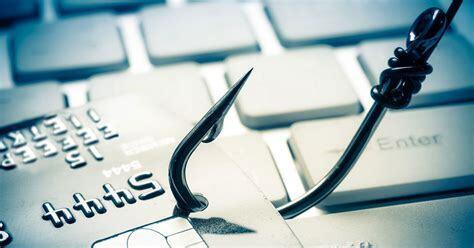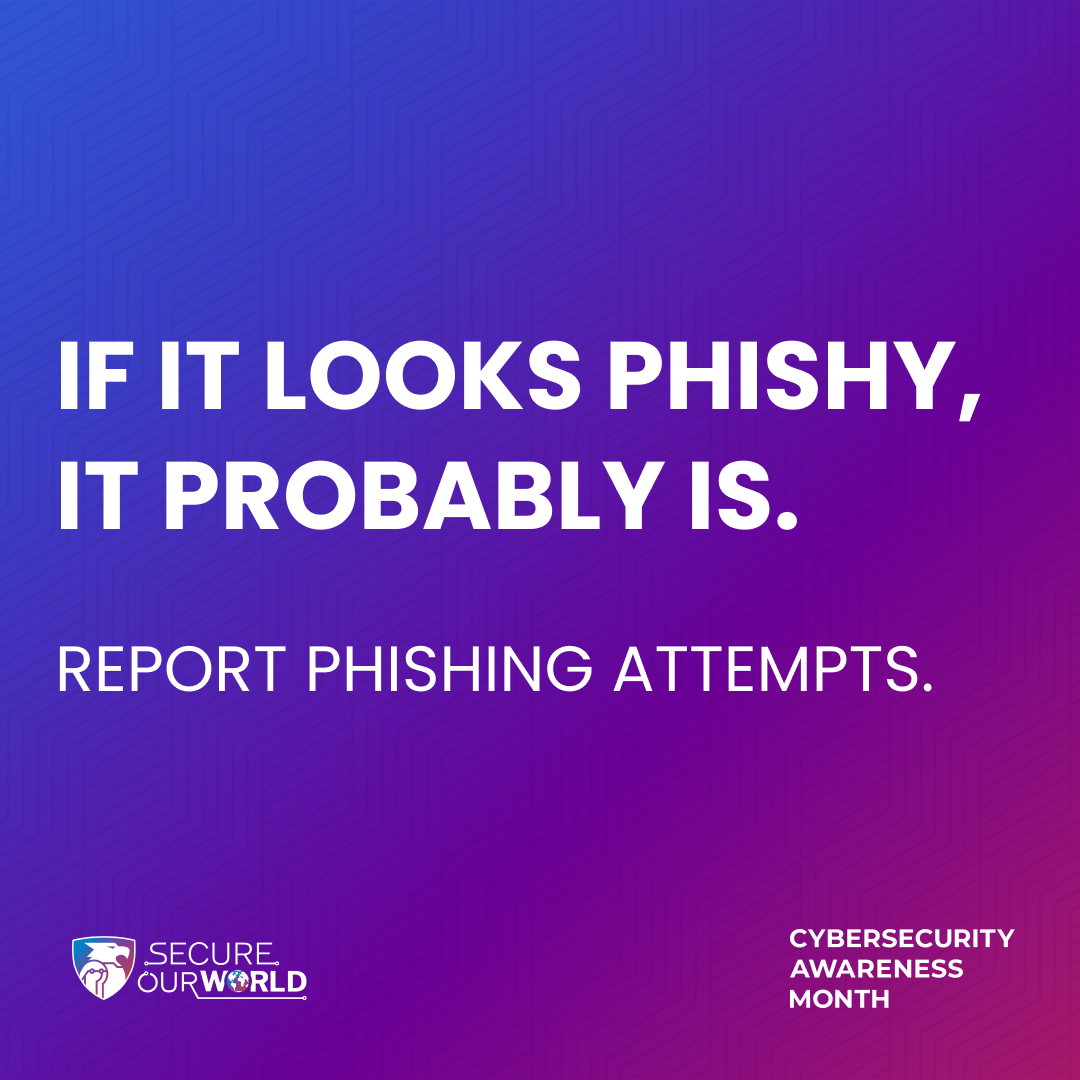Week 1: Recognize And Report Phishing
Recognize And Report Phishing
Phishing is the most common type of scam. It relies on the receiver engaging with the email by taking action such as replying, clicking a link, or sending a text. Recognizing and reporting phishing is critical to protecting yourself from scams. A phishing email may not be obvious at first, but once you see the signs and understand what the criminal is after it is easy to avoid the bait.

Phishing is a type of social engineering that involves using familiarities such as family members, associates, and any other trusted sources to get you to click a malicious link or download a file. Phishing can come in different forms such as financial aid documents, relatives asking for money, or a friend selling a piano for an amazing price. Even the method of delivery can change as it can come through text, email, or phone call. Fortunately, there are ways to protect yourself from being a victim.
- Unexpected emails: If the message is not from someone you were expecting than it is better to leave it alone. If you feel the need to respond, be cautious of links or suspicious wording.
- Bad grammar: Scammers do not have the best spelling, especially when it comes to important documents. If a professor or anyone with a supposed professional background misspells simple words, then it should be treated with suspicion.
- Wrong email address: Make sure the sender email address matches with who they say they are. Amazon customer service will not email you about a package from a Gmail account.
- Urgent: Most scammers will tell you that you are short on time or in an emergency situation so that you can act fast and not think about what you are doing. Their goal is to make you click on links without realizing until it is too late.
- Generic greeting: If the message seems vague and does not address you by name, steer clear. Most likely they are sending out mass messages and trying to get anyone they can to respond to their message.
- Too good to be true: Nobody is giving out a free piano or tools. Most likely they will ask you to pay a shipping fee in return for the free item and run off with whatever money they ask for. If the offer seems like it is not real, it probably isn't.

